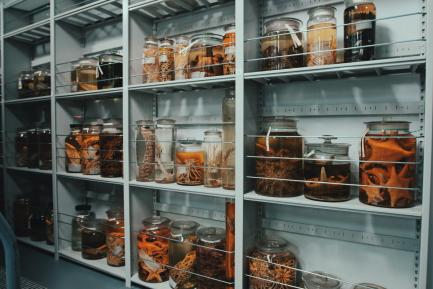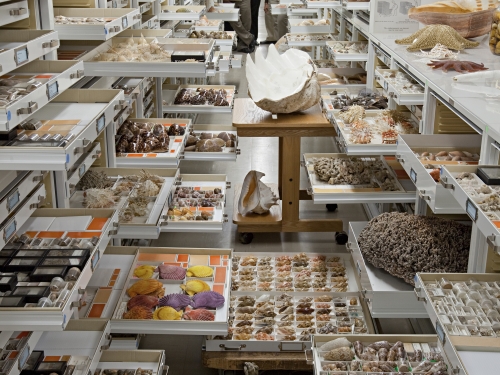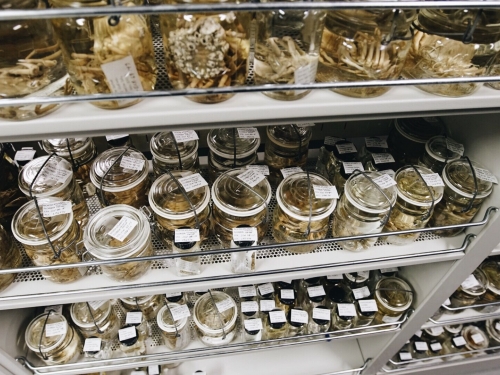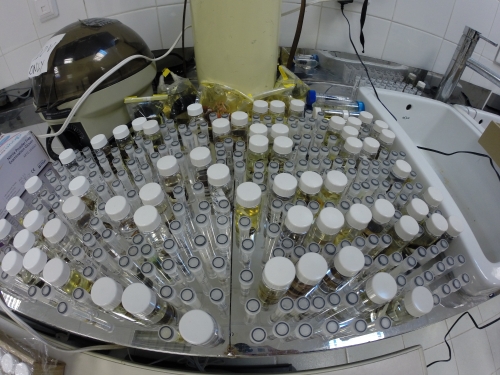The National Museum of Natural History’s wet echinoderm collections at the Smithsonian’s Museum Support Center in Suitland, Md. Echinoderms are a group of animals that include sea stars and sea urchins. Photo by Hilary Von Swank.
Natural history museums and collections are libraries of life that catalog the planet’s diversity, keeping records about where, when and what they collect. Taken with the collections they describe, these records help scientists study how life on Earth is responding to broad changes on the planet. The Genomic Observatories Metadatabase creates tools for scientists conducting cutting-edge biodiversity genomic research to share and reuse genetic data for environmental and ecological analyses, like natural history museums do with the information they keep about the forms of life they collect.
“Tracking biodiversity through global change is a collaborative effort,” said Christopher Meyer, a research zoologist at the Smithsonian’s National Museum of Natural History who helped lead the Genomic Observatories Metadatabase’s development. “We can’t do it on our own. GeOMe will advance big data and discovery for the future, allowing the sum of scientific endeavors to far exceed individual research products.”




